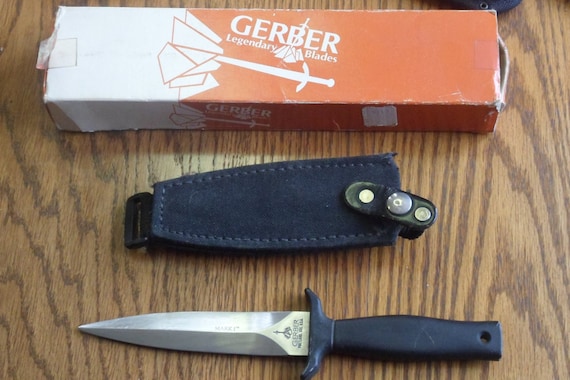

The Vietnam War is history.
The knives which remain
A solid reminder of its role in soldiering...
http://www.smallarmsreview.com/display.article.cfm?idarticles=2444
The BladeForums.com 2024 Traditional Knife is ready to order! See this thread for details:
https://www.bladeforums.com/threads/bladeforums-2024-traditional-knife.2003187/
Price is $300 $250 ea (shipped within CONUS). If you live outside the US, I will contact you after your order for extra shipping charges.
Order here: https://www.bladeforums.com/help/2024-traditional/ - Order as many as you like, we have plenty.


Today I'd like to post about two re-curved blades from the ancient Balkans. The Falx and the Sica.
Sica:

The name Sicacomes from Proto-Indo-European root sek-, meaning "to cut", the Sica's angled blade was designed to reach around the shields of opponents, like the large scutum shield of Roman legionaries. With the tip pointing up, the Sica would often catch on the bottom of opponent's helmets, allowing the user to force the blade upwards through the jaw and into the brain.
Falx:

The blade was sharpened only on the inside and was reputed to be devastatingly effective. However, it left its user vulnerable because, being a two-handed weapon, the warrior could not also make use of a shield. It may be imagined that the length of the two-handed falx allowed it to be wielded with great force, the point piercing helmets and the blade splitting shields - it was said to be capable of splitting a shield in two at a single blow. Alternatively, it might be used as a hook, pulling away shields and cutting at vulnerable limbs, or striking the edge of a strong shield. The inward curving point was still able to pierce the armor or flesh of the target behind the shield, rendering even the most reinforced shields much less effective defensively against a falx wielder.
These blades were used to deadly effectiveness against the Roman's and Greeks. The Falx was such a vicious weapon that Rome added lips to the top of their shoulder armor along with to their helmets.

The Dacian, Thracian and Illyrian tribes were ferocious in their warfare. Rome suffered a couple defeats at the expense of these men before overwhelming them in Trajan's time, some such as the Bastarnae suffering a Roman genocide.
The Rhompaia is essentially a falx, a polearm but these Thracian tribes instead of using them in a tight formation like say the English did, used them as weapons in the vanguard to smash tightly formed Greek/Roman formations. Powerful weapon, very cool stuff.Cool, but for a really mean Balkan curved blade from that period you should check out the Rhomphaia

That double edged wasp waisted dagger is an iconic historic design. Goes back to the coke bottle handle shaped FS dagger. Awesome pedigree to these daggers.


This photos I was taken this summer in museum with findings from the ancient Macedonian city Pella . . .The Kopis:

It is disputed where the kopis originated, its generally accepted as being a Greek blade though they've been found in Etruria, Etruscan territory. Possibly derived from the Egyptian khopesh:

This blade style is obviously used for slashing rather than stabbing, and the kopis is much longer than the Greek short sword Xiphos(commonly used as a hoplites secondary weapon)
Xiphos(Courtesy zombie tools):

A Xiphos was commonly 50-60 cm (even as short as 30cm) where a Kopis was often as long as 65cm.
It is even suggested that this weapon style made it as far as Nepal when Alexander the Great's army made it into India and inspired the khukuri:

The Nepalese have made this blade style famous, but most people don't know about the history of ancient Iberia, pre-Roman times and the Falcata:

Scutarii named for their shield (the Scutum) put this blade to great use against one another, the Carthaginians and finally the Romans. The Romans had great trouble in subduing Spain and suffered multiple embarrassing defeats often to smaller armies. The Celt-Iberian's would also spawn another famous blade...
The Gladius:

“Who was the first that forged the deadly blade? Of rugged steel his savage soul was made.”
― Tibullus








